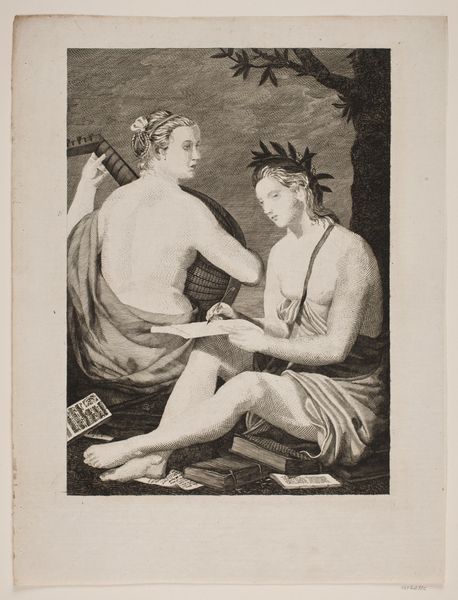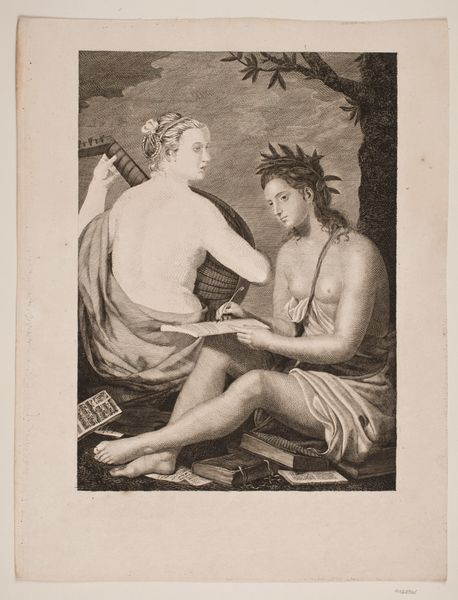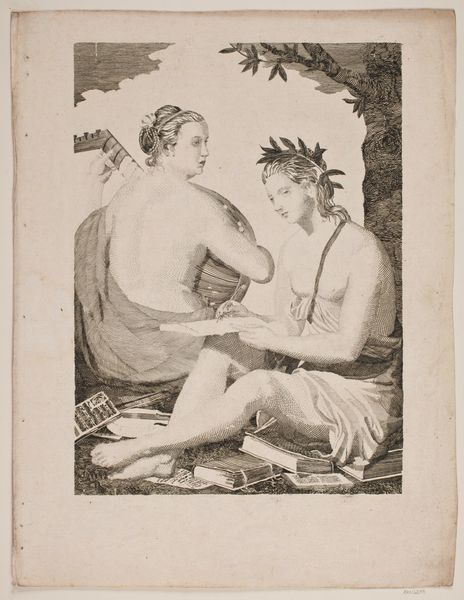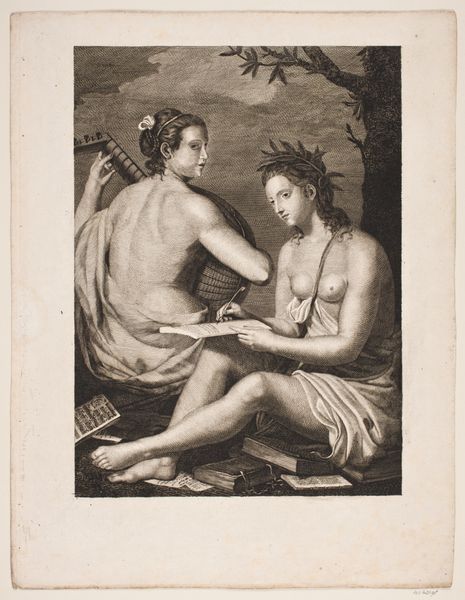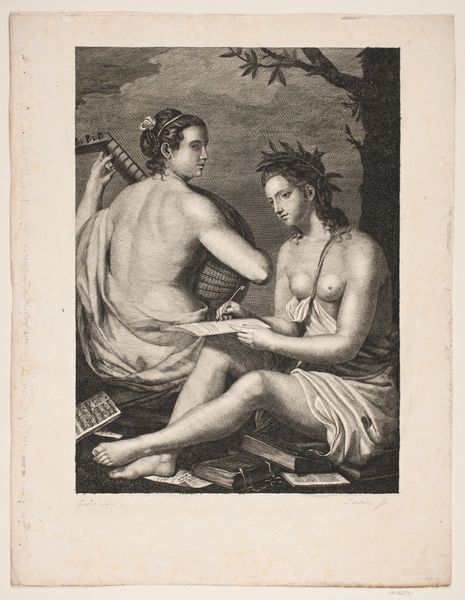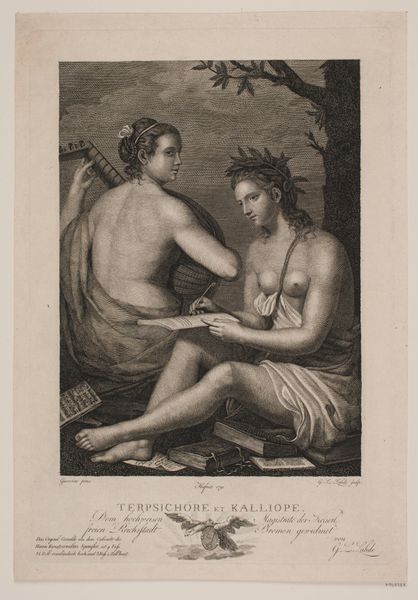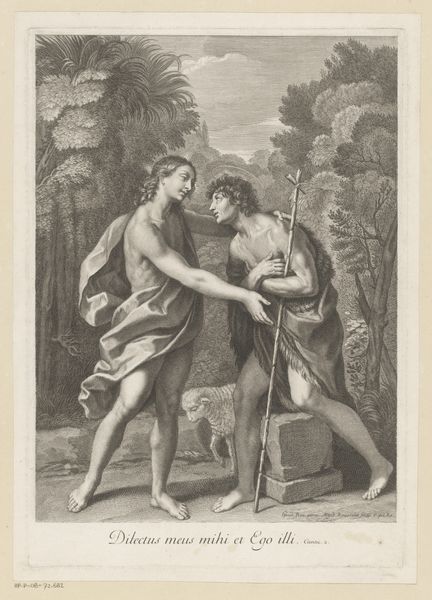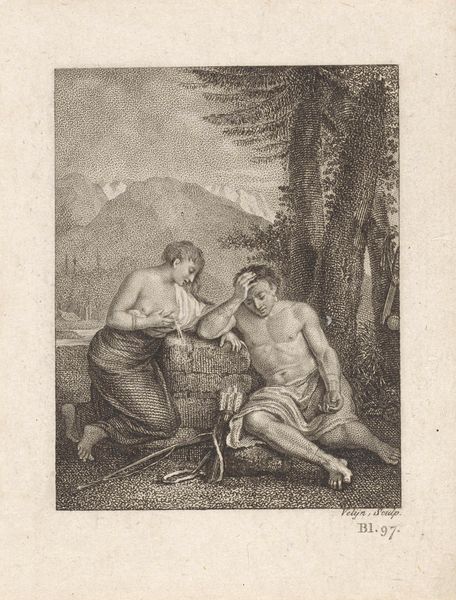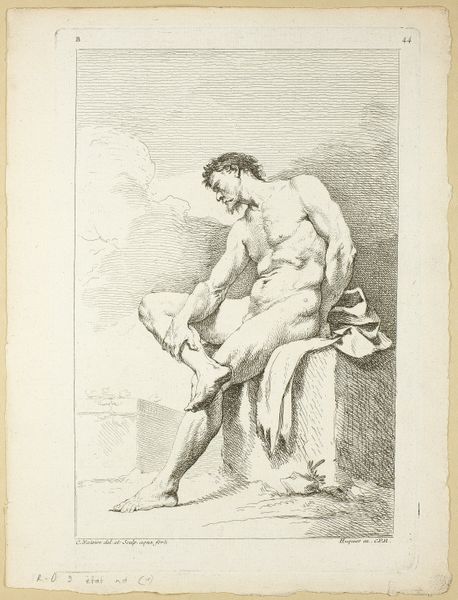
print, engraving
#
portrait
#
neoclacissism
# print
#
figuration
#
history-painting
#
engraving
Dimensions: 290 mm (height) x 210 mm (width) (billedmaal)
Terpsichore et Kalliope, made by Gerhard Ludvig Lahde, is an engraving, a printmaking technique where lines are incised into a metal plate, which is then inked and used to create an image on paper. Engraving was a key technology for disseminating images widely in the 18th and 19th centuries. Its reliance on skilled manual labor also connected it to a longer history of craft. Look closely, and you can see the painstaking work that went into creating the fine lines and details of this image. The cross-hatching, in particular, gives the figures their volume and depth. Consider the social context in which this print was made. While it depicts classical muses, its availability as a mass-produced item speaks to a new kind of consumer culture. The engraving process allowed for the reproduction of art on a scale previously unimaginable, democratizing access to imagery. Paying attention to the materials and making of this work gives us insight into the relationship between art, labor, and the rise of industrial capitalism.
Comments
No comments
Be the first to comment and join the conversation on the ultimate creative platform.
